Mother Nature’s love for beauty and abundance is depicted everywhere. The universe is full of beautiful living creatures of different types. Abundantly diverse species and kinds of organisms are present in all the layers of the universe and our planet Earth. From the sands of desserts to the depths of seas, astonishing and unique forms of life are present including the plants and the animals. The grass is common to plant species with a vast range of types, each with its characteristics and related uses. Zorro Zoysia grass is a common type of warm-season grass that is famous for its enchanting deep green color and resistance against shade, drought, traffic, and low temperature. It is a top choice for domestic and commercial lawns, golf courses, and parks.
In this article, we will highlight the nature and characteristics of zorro zoysia grass along with its uses, sowing, sod details, and maintenance.
Classification
Grass belongs to the family “Poaceae” or Germineae of the Monocotyledonous Flowering plants. Standing at the base of the pyramid, this family is the basic source of the dietary needs of the ecosystem. There are many other species in this family including grass and all its types.
Types of Grass
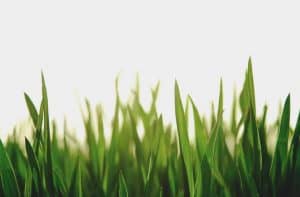
There are many different types of grass. A basic list of the types of Grass is mentioned below;
- Fine Fescue grass
- Kentucky Bluegrass
- Ryegrass
- Bentgrass
- Tall Fescue
- Dichondra
- Bermuda grass
- Centipede grass
- St. Augustine grass and
- Zoysia grass
Like all other plants, grasses are also according to the temperature and nature of seasons and the environment. Let us have a look at different types belonging to each season.
Grass of Cool Season
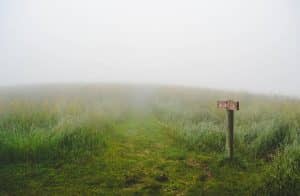
All the types of grass up till Tall Fescue are adaptive towards Cooler regions. They grow best in severe temperature fluctuations and are more commonly found in areas like North, North East, and Pacific North West.
Grass of Warm Season

The types of grass which are resistant and thrive best in warmer temperatures are usually found in the Southern region of the USA. The types like Dichondra, Bermuda, Centipede, St. Augustine, and Zoysia grass are the grasses of the warm season.
Each grass has its further types. Here we will focus on the zoysia grass and zorro zoysia grass.
Zoysia Grass
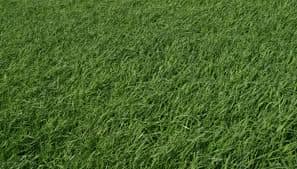
Zoysia grass is a type of grass with a hairy texture on the upper surface of the leaf. It is a diverse form of turfgrass that strives well in warm regions. Almost 11 different species of zoysia grass are used as turfgrass. This was originated from Asia and then transferred to America and other regions by the ending of the 18th century. The zoysia varieties have their natural and environmental requirements. To get the best out of the grass it is important to use and treat it accordingly.
Strengths of Zoysia grass
Zoysia grass has under mentioned positive features:
Good resistance towards shade, drought, cold weather, and heavy foot traffic. Compared to other varieties of grass it has a low fertilization requirement.
Weaknesses of Zoysia Grass
This is a slow recuperative potential and thatch able in nature. The mowing needs extra maintenance in terms of blade sharpness because some breeds have a sharp course leaf structure.
Species of Zoysia Grass
The basic three species of Zoysia grass are given below. Each comes with its specific qualities and requirements.
- Zoysia japonica
- Zoysia tenuifolia
- Z.matrella
Types of Zoysia Grass
The Zoysia grass (Zoysia spp.) further comes in many varieties. Some of the common types found in America are mentioned below:
- Carrizo Zoysia
- Cavalier Zoysia
- Chinese Zoysia
- Compadre Zoysia
- Crowne Zoysia
- Diamond Zoysia
- E1 Toro Zoysia
- Emerald Zoysia
- Empire Zoysia
- Meyer Zoysia
- Palisades Zoysia
- Zenith Zoysia
- Zorro Zoysia
- Zeon
Zorro Zoysia Grass
Zorro Zoysia belongs to the species Matrella which was brought to America from Manila in the Philippines. It is high-quality grass and follows a little slower growth as compared to other species and requires regular maintenance. Zorro Zoysia has fine leaves and was released by A&M University in 2002 in Texas. After its release, its popularity kept on increasing due to its beauty and resistance. In National Turf Grass Evaluation Program (NTPE) this southern grass was considered to be the best form of turfgrass.
Characteristics of Zorro Zoysia Grass
In this section, I will highlight the main characteristics of the Zorro Zoysia;
Appearance:
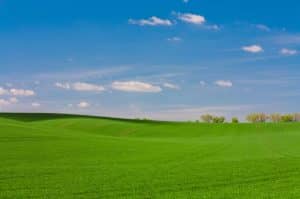
The grass has beautiful dark green leaves with fine structure and soft bladed texture.
Sunlight Requirement:
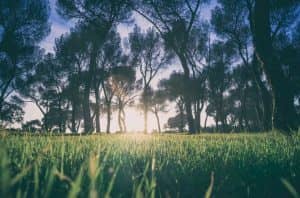
Zorro Zoysia needs low sun exposure to bright or partial sun for 3 to 4 hours a day. It is more shade resistant, so it can thrive in lesser light as well. Experts even suggest that it can be differentiated from other varieties of grass when you notice that it is growing thick and dense in the areas under the trees.
Drought Resistance:

As it is a deep-rooted grass so it gets pretty resistant to drought or other strong waters. The resistance can be increased by giving the water in fluctuated quantities once the roots have already gone deeply housed in the soil.
Pressure and Weather Resistance:

Like its family, it has good resistance towards rough traffic and hot weather.
Disease Resistance:

This is a strong type as compared to other types like Saint Augustine and Centipede. Many people are replacing their grass lawns with zorro zoysia due to its tougher nature.
Weed Resistance:
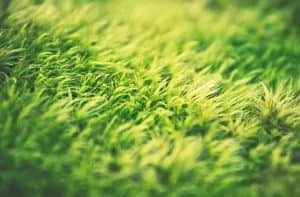
The grass does not give much space for the weeds to grow as it is thick and denser in growth. So it is weed resistant just like its other family members.
Recovery Rate:
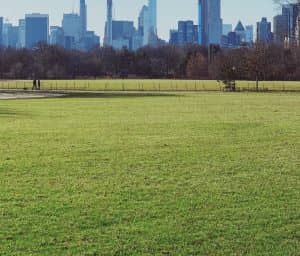
In case the grass gets destroyed due to some incidence; the recovery rate is pretty good, which is one of the reasons for the popularity of zorro zoysia Grass.
Fall Color Retention:
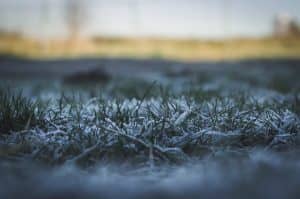
Zorro Zoysia is more resistant towards yellowing in the fall so it is preferable from the tropic to the transition zone. However, it turns dormant and yellow in winters because it is warm-season grass. When the temperature falls below 55 degrees Fahrenheit, the grass starts becoming dormant.
Uses of Zorro Zoysia Grass
Zorro Zoysia, because of its characteristics is a preferable option in domestic and official lawns, golf courses, parks, and athletic grounds.
The dark green and dense beautiful grass with shade resistance and temperature tolerances are becoming a preferable choice in the field of golf courses. It can be grown on different mowing heights and makes a perfect surface for tees and fairways.
In parks and lawns, it is preferred as it can grow under the trees as well giving a thick and soft carpeted floor giving a serene and pretty look.
Thinking about having bare feet walk on the grass on your lawn? Do consider Zorro Zoysia Grass as it gives a great feeling due to its thick and soft texture.
The shade resistance and moderate water requirement making it a perfect choice to replace many yards of Fescue grass in Metro Atlanta.
Zorro Zoysia Sod
The optimum season of laying the sod is from the spring up to the summer. However, it can be installed at any time of the year.
The sod needs a time of 1.5 months to get deep roots while smaller roots get formed in about two weeks. The zorro zoysia Sod is easy to grow as compared to other forms because it grows in a diverse range of conditions.
If you start the planting by zorro zoysia Plugs, they will need about 2 years to fill in if given the proper care and the typical Zorro zoysia maintenance. These are usually planted 6 inches apart.
The plugs once planted do not need heavy watering. Just a soft shower of 15 minutes daily for three weeks is required. Once the zorro zoysia plugs get rooted, you can follow the weather conditions for the watering routine.
Zorro Zoysia Pod Near Me
If you are planning to buy the pods, you can check your local nursery or the grass cultivators. You can simply search the web with the question “Zorro Zoysia Pods near me” to get some good ideas to buy the pods from online nurseries and cultivators. They even provide installation services and you do not need to do any effort or hustle to get the grass. It is pretty easy, isn’t it?
The Zorro Zoysia Grass Maintenance
Although this is low maintenance and tough kind of grass still plants need some sort of maintenance in general. The Important aspects related to the maintenance of this grass variety are mentioned below:
Water Requirement
The weekly water requirement is around 1 to 11/4 inches. However, if the soil is sandy, water requirements may increase. In the absence of water for about a week or two, it starts getting weaker and dormant. Wilting starts when the leaves turn light green to grayish in shade. It is recommended to irrigate the grounds early in the morning so that the water may evaporate and penetrate properly to avoid diseases.
Proper Drainage
The wet and over moist soil becomes prone to fungal growth. The fungus Rhizoctonia Solani AG 2-2(LP) usually forms a “Large Patch” of yellowish-brown grass which spreads if untreated. This issue usually occurs during fall or in spring in the areas of poor drainage of the soil. This fungal attack starts with a symptom that the borders of the blades of grass start turning orange in shade. The issue can be avoided by proper raking and bagging. Infected blades need to be removed and discarded properly to keep the fungus at a bay.
Thatch Issue
Because the grass grows dense and thick, it becomes somewhat difficult to mow due to the thatch formation. Thatch is the dead grass that falls on the ground under the blades. It becomes like a shield to stop the penetration of water molecules in the soil and makes the grass carpet somewhat unhealthy. This situation if untreated may make the soil dry and prone to microorganisms and pests. So regularly dethatching is required to maintain a healthy grass coat.
Mowing Requirements
Thinking about the mowing details? It can be mowed by a reel mower at 1/4 inches or with a rotator mower at 3 inches. The blades should be sharp enough to provide complete dethatching and a cleaner lawn.
Nitrogen Requirements
Nitrogen requirements as lower as compared to other grass varieties. The optimum soil PH is 5.8 to 7. Lime requirements or other fertilization requirements can be found by soil testing. The grass needs 2 to 4 pounds of Nitrogen per 1000 square feet.
Fertilizer Requirements
You should select a Fertilizer suitable for Zoysia grass. Always avoid the thick granular fertilizers and fertilize the dry grass because fertilizing the wet turf may lead you to burn your grass. Do not over-fertilize the lawn as you are not interested to increase the chances of over-fertility leading to thatching. Once-year fertilization is pretty enough for a healthy grass coat.
Mites prevention
The Zoysia grass mites were first found in the USA in the 1980s. These pests attack the leaf sheaths and the new leaves. The overall health and appearance of the grass carpet get damaged by the pests.
Solutions:
Experts say that pesticides with the under-mentioned chemicals are used in case of attack.
Just like all other creatures, this one too needs your attention and effort for maintenance. In short, for a healthy grass coat, zorro zoysia maintenance can not be ignored.
Related Post:
Summary
The beautiful dark green cultivar of Zoysia Grass is a “tough” kind of grass due to its high resistances and soft dense coat. It is pretty famous due to its shade resistance and is replacing many other grass varieties. It is low maintenance yet needs some steps to be followed for a healthy appearance and proper growth.
This grass is the preferable choice for Golf courses and parks. Next time you think about the type of grass for your lawn or office, do not forget to consider the zorro zoysia grass.

